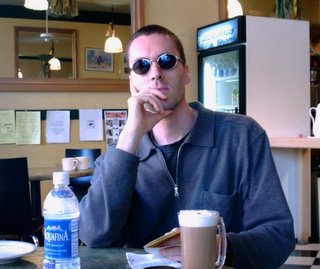Who disrupts here?
So many people talk about disruption, so few are really driving disruption. The original term was probably created by Clayton Christensen in his book “The Innovator’s Dilemma” in 1997. Jean-Marie Dru with his two books “Disruption” and “Beyond Disruption” is probably the best known Advertising guy, owning the term in the marketing community. Both use this term quite differently, Christensen to describe major forces that change a significant part of human life, Dru to describe successful marketing programs that intersect strongly with individuals
Independent of how expansive one uses the term “Disruption”, the more interesting question is who is really creating the disruptions. Christensen talks more about individual innovators or societal forces that create disruptions; Dru attempts to put the creative marketer into the center of generating disruptive interactions. Christensen really describes large disruptive forces, whereas Dru talks about singular disruptive moments. I would like to ask the question if the marketing industry is really able to create disruptive forces, not just singular disruptive moments.
Let’s look at the latest real disruptive force within the marketing space: The “Searchanization” of most marketing interactions. The Web model of “Search”, where the Consumer sifts guided and in control through massive amount of potential information is being expanded to most marketing interactions, far beyond the pure Online experience. This channel agnostic “Search” ends when the Consumer sees/meets/smells something interesting, exciting, or unique that is relevant for him or herself. I do believe that this is the biggest disruptive force in today’s marketing universe. Who created it? It’s not really one individual but a combination of the first Search companies (Overture before most other players), to Google, to other interaction pioneers like Tivo who have transferred the personalized Search model to other media.
Why don’t we see a lot of marketing firms in this arena of creating disruptive forces that change significantly the rules and the context of marketing interactions? It comes back to the difference between Christensen and Dru: one focuses on big major transformations, whereas most marketers are satisfied with one successful disruptive moment that captures the attention of millions of consumers. It’s much shorter and evasive but always based on a disruptive interaction between brand and individual.
Still, the first marketing services team, which tries not to only understand the bigger disruptive forces but be an energetic driver of larger disruptive forces, will be a true innovator and a leader changing the marketing landscape. Well designed disruptive moments are good, instigated disruptive movements are even more exciting.
Independent of how expansive one uses the term “Disruption”, the more interesting question is who is really creating the disruptions. Christensen talks more about individual innovators or societal forces that create disruptions; Dru attempts to put the creative marketer into the center of generating disruptive interactions. Christensen really describes large disruptive forces, whereas Dru talks about singular disruptive moments. I would like to ask the question if the marketing industry is really able to create disruptive forces, not just singular disruptive moments.
Let’s look at the latest real disruptive force within the marketing space: The “Searchanization” of most marketing interactions. The Web model of “Search”, where the Consumer sifts guided and in control through massive amount of potential information is being expanded to most marketing interactions, far beyond the pure Online experience. This channel agnostic “Search” ends when the Consumer sees/meets/smells something interesting, exciting, or unique that is relevant for him or herself. I do believe that this is the biggest disruptive force in today’s marketing universe. Who created it? It’s not really one individual but a combination of the first Search companies (Overture before most other players), to Google, to other interaction pioneers like Tivo who have transferred the personalized Search model to other media.
Why don’t we see a lot of marketing firms in this arena of creating disruptive forces that change significantly the rules and the context of marketing interactions? It comes back to the difference between Christensen and Dru: one focuses on big major transformations, whereas most marketers are satisfied with one successful disruptive moment that captures the attention of millions of consumers. It’s much shorter and evasive but always based on a disruptive interaction between brand and individual.
Still, the first marketing services team, which tries not to only understand the bigger disruptive forces but be an energetic driver of larger disruptive forces, will be a true innovator and a leader changing the marketing landscape. Well designed disruptive moments are good, instigated disruptive movements are even more exciting.


4 Comments:
Great site lots of usefull infomation here.
»
Interesting site. Useful information. Bookmarked.
»
Thank you for sharing a nice article.
Congratulations on your posts, not go from your site successful.
When you love what you do then work doesn’t seem like work!If creativity is what you are all about and if animation isyour first love, then rush to ZICA today! And let yourpassion lead you!Mercedes has set the pace in taking initiatives. In August, it signed up as the automotive partner for all motor sporting events at the Budhh International Circuit in Greater Noida for two years. The Mercedes SLS AMG-with top speed of 317 km/hr-will be the 'safety car' for all racing events at the circuit. It will also provide cars to race officials.
Hummer Control Arm
Post a Comment
<< Home